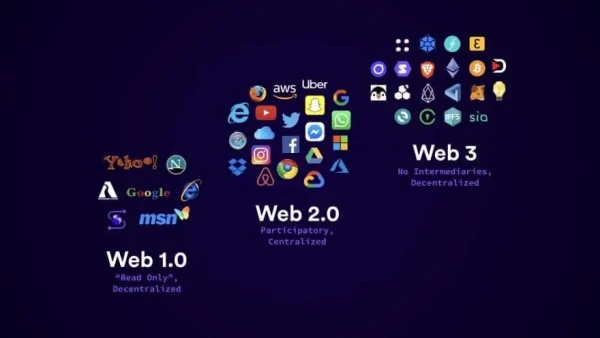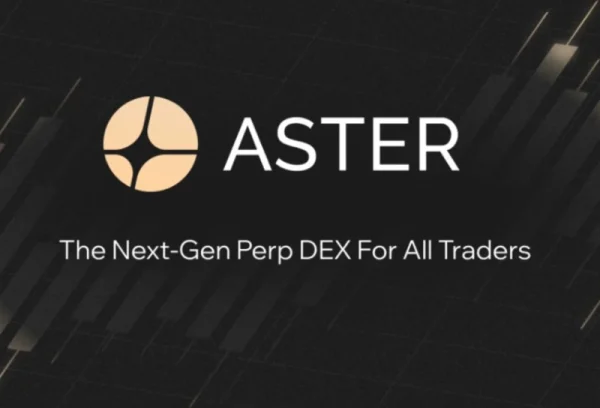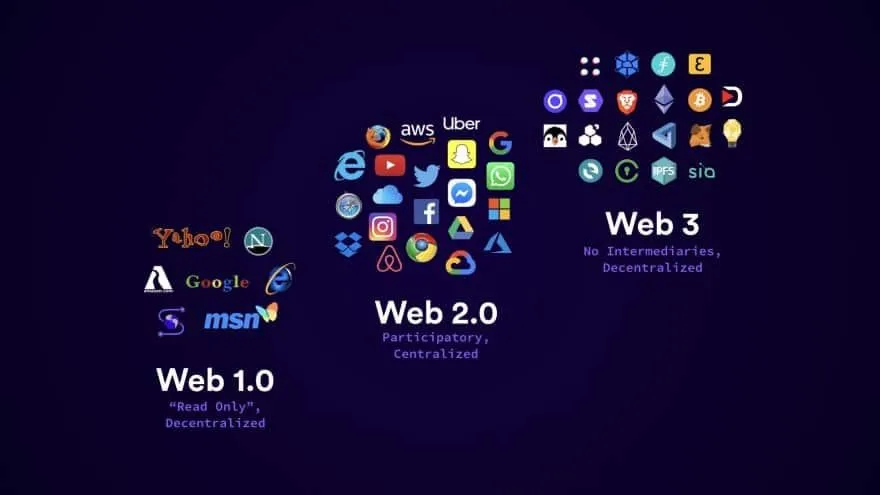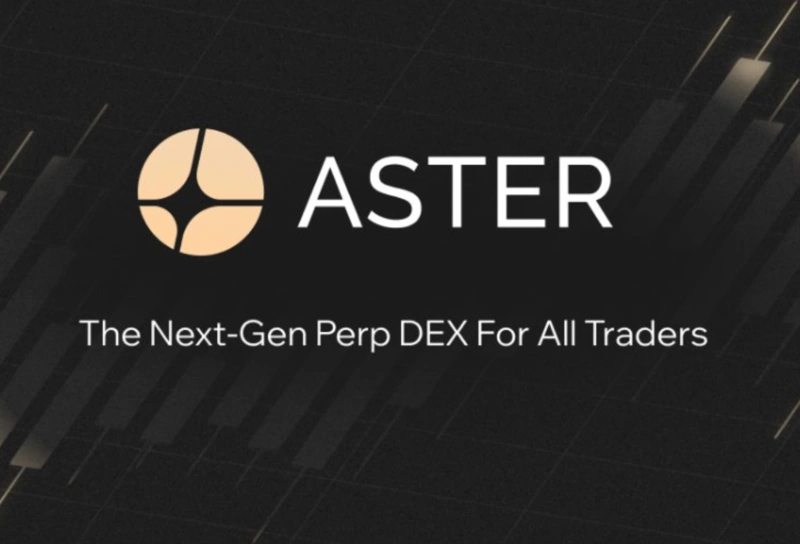Markets in Crypto-Assets Regulation (MiCA)
The European Union introduced the Markets in Crypto-Assets Regulation (MiCA) in June 2023, a regulatory framework designed to govern the crypto-asset sector. This landmark regulation aims to address the challenges and risks associated with the digital asset industry, which has, until now, largely operated outside the boundaries of traditional financial regulations.
MiCA's introduction marks a significant effort by the EU to standardize rules across its member states, ensuring a safer, more transparent, and more stable crypto-asset market. By focusing on consumer protection, market integrity, and financial stability, MiCA paves the way for the mainstream adoption of crypto-assets while fostering innovation and growth within the industry. As the digital asset space evolves, MiCA represents a critical step forward in establishing a comprehensive legal framework that balances the needs of consumers, investors, and industry stakeholders.
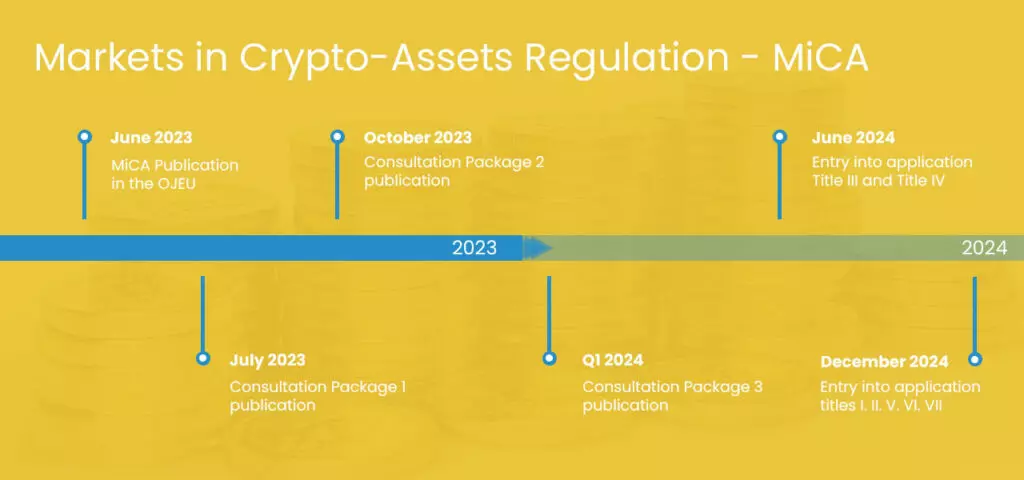
Table of content
Key Objectives and Scope
- Consumer Protection: MiCA aims to protect investors and consumers by requiring transparent disclosures and fair marketing practices, helping consumers make informed decisions about crypto-assets.
- Market Integrity: The regulation seeks to prevent market abuse, manipulation, and fraud in the crypto-assets market, establishing a safer and more reliable investment environment.
- Financial Stability: By regulating significant crypto-asset activities, MiCA intends to mitigate systemic risks and ensure the financial system's stability.
- Innovation and Competitiveness: While regulating, MiCA also supports innovation, ensuring the EU's financial sector remains competitive and innovative, embracing technological advancements responsibly.
Main Provisions
- Transparency and Disclosure: Issuers of crypto-assets must publish a white paper detailing the project, the risks, and other critical information. Competent authorities must approve this document.
- Authorization and Supervision: Crypto-asset service providers (CASPs), including exchanges, wallet providers, and others, need to obtain authorization from national competent authorities to operate within the EU. They will be subject to ongoing supervision.
- Consumer Protection Measures: MiCA includes specific provisions for consumer protection, such as clear risk warnings, prohibition of misleading practices, and rules on governance and conflict of interest.
- Operational Resilience: Entities must demonstrate operational resilience against a wide range of risks, including cyber threats, to ensure the continuity and integrity of their services.
Impact and Implications
- For the Crypto Market: MiCA will likely lead to increased compliance costs for crypto businesses but also provide a clearer regulatory environment that could enhance consumer trust and facilitate wider adoption of crypto-assets.
- Global Implications: As one of the first comprehensive regulatory frameworks for crypto-assets, MiCA could serve as a model for other jurisdictions, potentially influencing global standards for crypto regulation.
Advantages and Disadvantages of MiCA
| Advantages of MiCa | Disadvantages of MiCa |
| Legal certainty | Tough rules to meet |
| Rules tailored to fit crypto | Fines for getting it wrong |
| Credibility to wary customers | Caps on USD stablecoins |
| One license to operate across the bloc | NFTs a gray area |
| Attract TradFi investment | Unclear how overseas enforcement will work |
Crypto-Assets not covered by the MiCAR
Decentralized Finance
Decentralized Finance (DeFi) represents a paradigm shift in the financial sector, offering services from lending to asset trading without centralized intermediaries. Despite its revolutionary potential, DeFi's inherent decentralization poses unique regulatory challenges, often eluding traditional regulatory frameworks like MiCA. The absence of a central issuing authority means that certain DeFi protocols and assets lack the clear regulatory oversight envisaged by MiCA, navigating in waters yet to be charted by comprehensive EU regulations.
Non-Fungible Tokens
Non-fungible tokens (NFTs), digital assets representing ownership or proof of authenticity of unique items, further exemplify the complexities of crypto regulation. Given their uniqueness and the vast array of assets they represent, from digital art to real-world asset rights, NFTs sit in a regulatory gray area. The current MiCAR framework primarily addresses fungible, interchangeable assets, leaving NFTs in a liminal space where consumer protection and market integrity guidelines are less defined.
Cryptocurrencies Under Existing Regulations
Additionally, cryptocurrencies that are already regulated under existing financial laws, and recognized as securities, derivatives, or other financial instruments, remain outside the specific scope of MiCAR. These assets continue to be governed by pre-existing regulatory frameworks, which may or may not fully address the novel risks and opportunities presented by the digital age.
Crypto-Asset Classifications and Requirements
Other Crypto-Assets – Title II:
MiCAR establishes a foundational protocol for crypto-assets that do not qualify as Asset-Referenced Tokens (ARTs) or Electronic Money Tokens (EMTs). Issuers of such assets are mandated to adhere to a comprehensive notification regime, ensuring transparency and accountability. Key among these requirements is the obligation to draft, notify, and publish a crypto-asset white paper (CA-WP), meticulously detailing both content and form as stipulated by MiCAR. This cornerstone document, coupled with stringent marketing communication guidelines, must be submitted to the competent authority, underscoring the issuer's liability for the veracity of the information provided. Notably, offerings directed to fewer than 150 persons per Member State or those not exceeding a total consideration of 1 million Euros over 12 months are exempt from these stipulations, offering a degree of flexibility for smaller-scale operations.
Asset-Referenced Tokens (ARTs) – Title III:
The issuance and public offering of ARTs are subjected to more rigorous regulations, reflecting their potential impact on financial stability and consumer trust. Beyond the CA-WP obligations, entities pursuing ART offerings or seeking trading admission must secure an authorization, underpinned by strict fit and proper criteria. While CRR credit institutions are exempt from this authorization for ART issuance, they must notify competent authorities well in advance. ART issuers are further bound by their own funds requirements, asset reserve composition mandates, and custody policies, ensuring a robust risk mitigation framework. Significantly, ARTs are also required to establish recovery and operational redemption plans, enhancing resilience against operational disruptions. ARTs that either remain below a five million Euro threshold over 12 months or are exclusively targeted at qualified investors enjoy exemptions from these rigorous requirements.
Electronic Money Tokens (EMTs) – Title IV:
For EMTs, MiCA carves out a distinct regulatory pathway aligned with existing electronic money frameworks. Issuers must obtain authorization as either CRR credit institutions or electronic money institutions, with a clear prohibition against interest granting on EMTs. The issuance and redeemability of EMTs are governed by MiCA directives, demanding the segregation of at least 30% of received funds and investment of the remainder in secure, liquid financial instruments. Like ART issuers, EMT issuers are obligated to devise recovery and redemption plans, ensuring operational continuity and consumer protection.
Crypto-Asset Services – Title V:
Central to MiCA's architecture is the harmonization of prudential and business conduct standards across crypto-asset service providers (CAS-Providers), encompassing a wide array of services from trading platforms to custody, exchange, and advisory services. This unified framework ensures that all market participants adhere to consistent, high-quality standards, promoting a safe, transparent, and vibrant crypto-asset ecosystem.
The MiCA will apply from 30 December 2024, except for Titles III and IV, which will apply from 30 June 2024.
Conclusion
MiCA's introduction of a unified legal framework for crypto-assets marks a transformative phase for the EU's digital asset market, enabling firms to seamlessly offer and service crypto-assets across Member States. Entities previously operating in an unregulated environment must now navigate licensing procedures and adopt compliant operational practices. Meanwhile, already regulated entities can bypass the arduous licensing process, although they must refine their systems to align with MiCA's specific crypto-asset requirements. This regulatory evolution underscores a pivotal shift towards standardized oversight, promising enhanced market integrity and consumer protection across the European crypto landscape.
